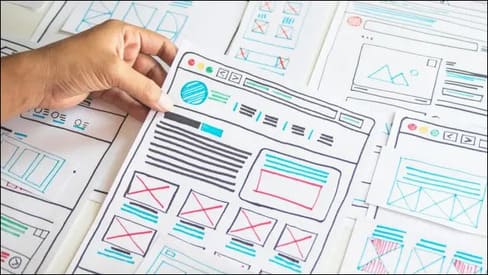In the web and application design profession, you will hear two terms that are used very often, UI and UX. They are sometimes used interchangeably, and they often refer to very similar aspects of product design.
| Join the channel Telegram of the AnonyViet 👉 Link 👈 |

So what exactly are UI and UX? Let’s find out in this article.
What is UI and UX really?
Think about the technology you use every day. Smartphones, laptops, desktops, even devices like dodgers all have two main elements: user interface (UI) and user experience (UX).
Adobe describes a user interface or UI as a place where people interact with machines. That includes everything from your smartphone screen to the keyboard on your laptop. It’s what you use to operate the machines to achieve your goals. User interface covers every aspect of how we interact with products.
User experience, or UX, is a bit harder to define. User experience is more about the intangibles of a product, like how you feel and what you think while using it. The idea was coined by Don Norman while working at Apple in the ’90s, and since then he’s described it as “everything to do with your experience with a product.” All aspects of someone’s interaction with a company, from the company’s services to the final product, can be categorized in UX.
Design coaching website CareerFoundry defines the difference between UI and UX this way: UI is how the product’s interface looks and works, while UX is the overall feel of the experience.
How UI and UX work together
Both of these elements are essential to every product design. For example, when a web designer uses responsive so that a website fits whatever screen the user is viewing it, it affects both the user interface and the UX. The interface works more smoothly, giving users a better experience when using that website.
User interface and user experience also affect a website’s accessibility. If a person with a disability cannot use a website, it is a bad user experience due to a poor interface. Fortunately, many designers are understanding that and are enhancing UI and UX experiences.
UI and UX Design
When building a new app, website, or product, UI and UX designers will have to ask certain questions during the development process. Looking at what each designer does can provide more insight into the difference between UI and UX.
UI Design Mission
A user interface designer is concerned with the look, feel, responsiveness, and interactivity of a product. Some of the tasks they may do include:
- Do design research to gain insight into the latest design trends and gauge people’s expectations for good design.
- Develop visual design including graphic elements, colors, fonts, icons, etc.
- Design systems like style and template libraries to ensure the product’s design remains consistent with the brand.
- Consider interactivity as a design element to improve responsiveness. That can include effects and motions that make the page or app smoother.
The work doesn’t stop there. Once the product has gone far enough, a UI designer can also prototype and test it to see how it works.
Design mission of UX
Jonathan Widawski, CEO of user testing company Maze, say “UX starts with a problem and ends with a wireframe or prototype.” Some of the things a UX designer can do:
- Research users to identify problems people face when using similar products and how to solve them.
- Information Architecture (IA), the practice of organizing elements of an application or website in a way that is easy to find and intuitive. Good organization of operations will help create an easy experience for users of the product.
- Plan the project to ensure that everyone on the product design team gets to experience the test.
UX designers will also build wireframes – skeletonized versions of product interfaces – to see how they will perform and predict user experience.

Why are UI and UX important?
From a competitive standpoint, the product with the best user experience is usually the one that people choose when given several similar options. According to McKinsey and Company, companies that focus on design have twice as fast revenue growth as those that don’t.
On a broader scale, UI and UX come into the products that each of us uses every day. Hopefully you have grasped the basics of UI and UX after reading this post.











